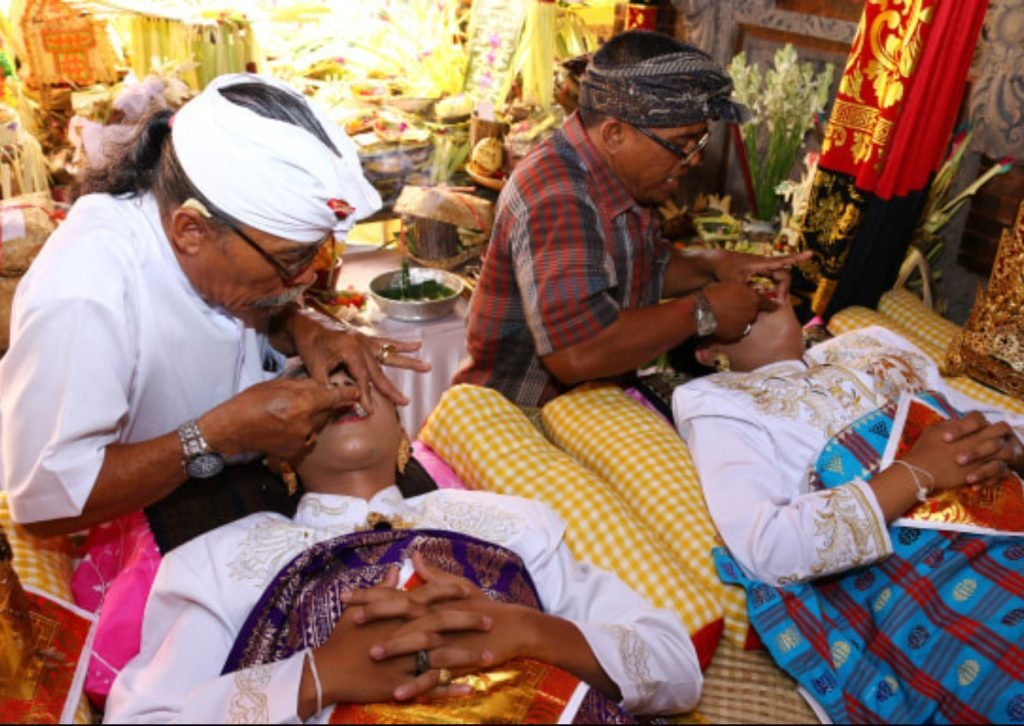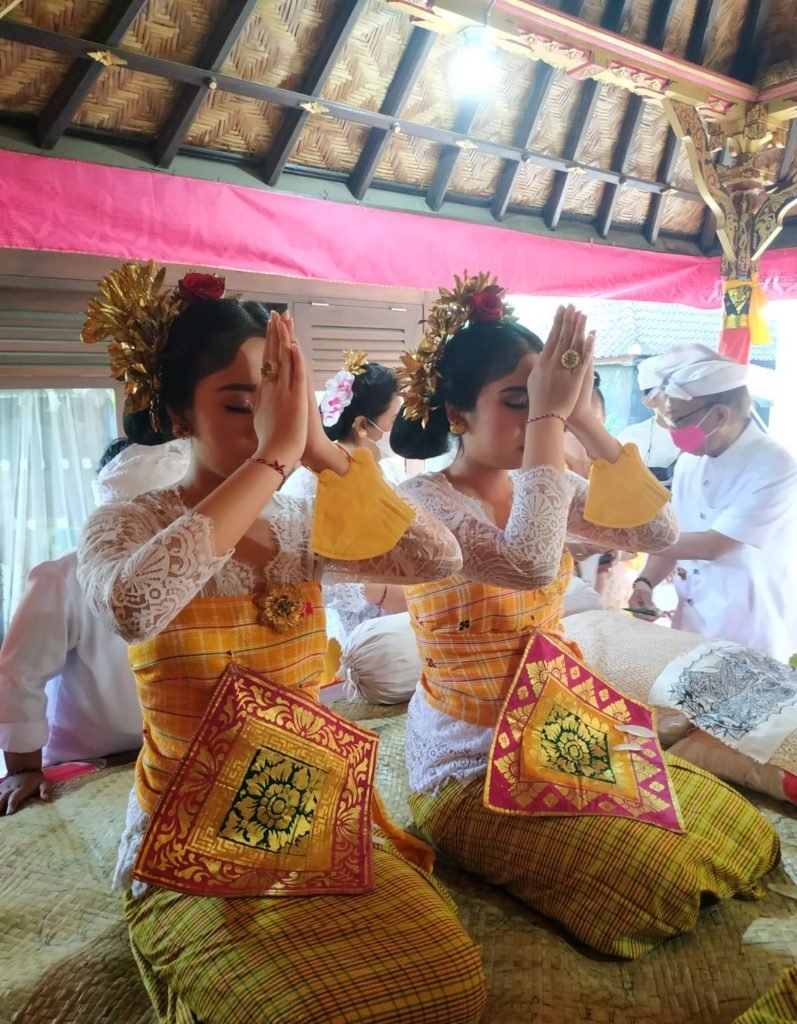Uncategorized
Mesangih: A Symbolic Path to Maturity in Bali
Mesangih, also known as metatah or mepandes, is a tooth-filing ceremony of the Balinese Hindu community that symbolizes human maturity in controlling desires. This ritual marks the transition from adolescence to adulthood, typically performed by females who have reached fertility age and males over the age of 16. However, adults may also undergo the ceremony as well. Adolescence is seen as a period of self-discovery and temptation, and those who undergo mesangih are believed to gain greater self-control and positive personal growth.
In Hindu belief, there’s a concept known as Tri Guna which categorizes traits that influence human character. Tri Guna consists of Sattwam (character of calmness, sincerity, wisdom, and selflessness), Rajas (character of energy, aggression, and ambition), and Tamas (character of passivity, laziness, and slowness). Rajas and Tamas lead to the emergence of six enemies of mind known as the Sad Ripu. These traits are kama (desire), kroda (anger), loba (greed), moha (delusion), madha (intoxication), and matsarya (envy). These six traits must be controlled in everyday life whilst the mesangih ceremony is intended to help achieve that control.

During the ritual, only six teeth are filed: the four upper incisors and the two upper canines, symbolizing the Sad Ripu. These negative traits exist not only in humans but also in other forms of life. In Balinese art and architecture, giant figures and animals are often depicted with prominent canine teeth, symbolizing primal or animalistic traits. Filing these teeth reduces the symbolic resemblance between humans and animals. The lower teeth are left untouched as they are associated with the underworld and represent the necessity of maintaining a balance between suppressing and preserving desires.
Mesangih is a sacred and mystical ritual accompanied by several taboos. When performed with multiple participants in the same location, the number of participants must be even, as odd numbers are considered inauspicious. Participants are also prohibited from closing their eyes during the tooth-filing process. Before the mesangih ceremony, Sang Yajamana (the person that performs religious ritual) holds a meeting to discuss the ceremony, such as determining an auspicious day to ensure the smoothness of the ritual. Once an auspicious day is chosen, the ceremony can proceed. Essential items for the ceremony include offerings, a bale (traditional pavilion) with a bed, a yellow coconut for spitting, a bowl containing tooth-filing tools, and a piece of cloth to cover the participant’s body.

After the mesangih ceremony, there is a tradition called mapedamel, which aims for the individual to become wise and devoted to the teachings of Hinduism. Mapedamel comes from the word “dama,” which means self-control. Participants wear a white cloth with a yellow Semara Ratih sash, symbolizing blessings from the deities Semara and Ratih, along with Tridatu threads (red, white, and black) to signify their commitment to religious norms.

In dentistry, a procedure similar to mesangih is known as occlusal adjustment with selective grinding technique, which corrects disharmony in tooth contact during occlusion and improves tooth function. Anatomically, a tooth consists of enamel, dentin, pulp, and cementum. Enamel is one of the strongest tissues in the human body. The tooth filing tradition may cause damage to the enamel, so it is recommended not to file the teeth more than 2 mm to avoid affecting the enamel’s inner layers.
The mesangih ceremony is a form of repayment by parents to their children. Parents are responsible for shaping their children’s character, making the performance of mesangih a duty for all parents. Additionally, Balinese Hindus believe that individuals who undergo mesangih become spiritually pure and find it easier to connect with Ida Sang Hyang Widhi Wasa (the Supreme God). In contrast, those who do not participate in the ceremony are believed to be unable to reincarnate as humans in the next life. Thus, mesangih holds a profound significance in the Balinese Hindu cycle of life.
References:
Damayati, N., Bhattacarya,, W., & Ernawaty. (2023). Mesangih: Tradisi Potong Gigi masyarakat Hindu Bali (perspektif kesehatan gigi dan mulut). Jurnal Penelitian Agama Hindu, 7(3), 359-370. https://jayapanguspress.penerbit.org/index.php/JPAH 359
Forge, A. (1980). Tooth and fang in Bali. Canberra Antropology, 3(1), 1-6. DOI: 10.1080/03149098009508613


